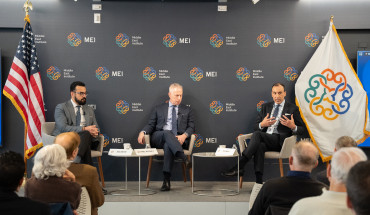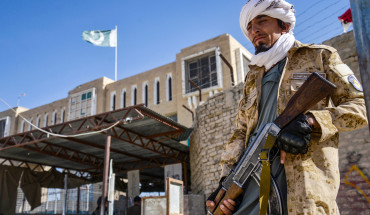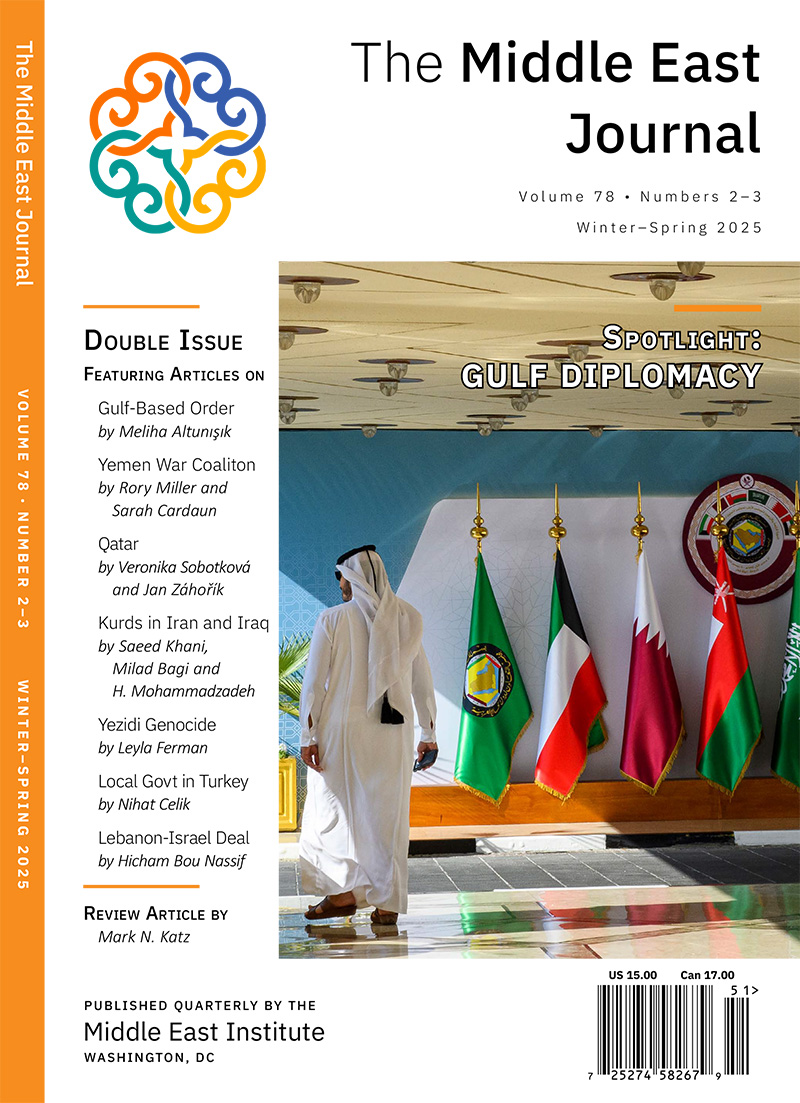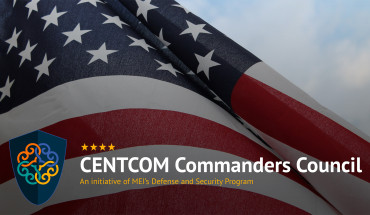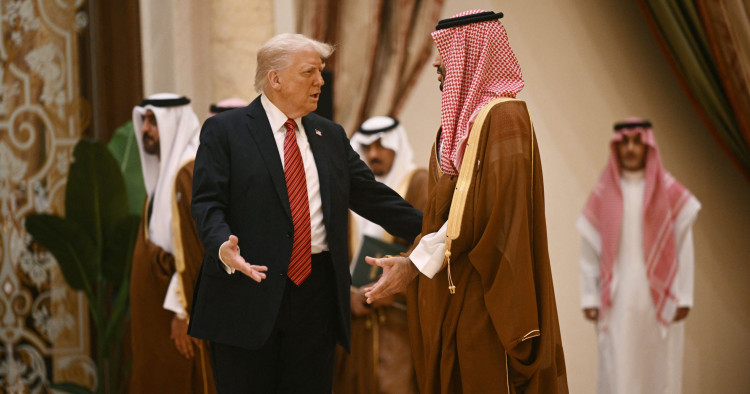US President Donald Trump arrived in Qatar today (May 14), after the first leg of his Middle East trip in Saudi Arabia, where he had doubled down on America’s economic ties to the region’s leading economic powerhouse and made a surprise announcement regarding Syria. On the latter, Trump declared the United States would be lifting “all” Syrian sanctions and subsequently met with the war-torn country’s de facto president, Ahmed al-Sharaa.
Two unresolved issues that loom large over the region — Iran and Israel-Palestine — have not yet emerged publicly as key features of this trip, but there are still a few days left. US policy in the Middle East will inevitably have to focus on these two big questions since both affect the overall strategic stability of the region’s state system — and without increased security, Trump’s aspirations for advancing prosperity in the region and deepening America’s economic ties will face limits.
Trump doubles down on US engagement with Saudi Arabia
One of the strategic thrusts of the opening months of Trump’s second term has been aimed at deepening America’s economic engagement with the leading economies of the Gulf. Thus, the first leg of his trip to the region resulted in a template for deeper US-Saudi ties.
Trump’s Middle East visit notably came just as the world’s two largest economies, the United States and China, took steps to de-escalate their trade war, which has roiled global markets. The pause in that fight, sparked last month by the US president, doesn’t appear to have yet produced major concessions from China.
The second Trump administration recognizes that the Middle East is increasingly a geostrategic linchpin in a world dominated by competition between China and the United States. The Biden administration before it also identified the region as a priority for similar reasons — though the Oct. 7, 2023, attack on Israel, subsequent wars in the neighborhood, as well as Russia’s full-scale invasion of Ukraine, all derailed President Joe Biden’s emerging regional strategy.
Yesterday, the Trump White House touted $600 billion of commitments by Saudi Arabia to invest in the US and build bilateral ties in several sectors, including energy, defense, high technology, infrastructure, and critical minerals. Some observers noted that the deals announced on paper actually totaled less than the $600 billion figure cited, and it is important to remember that some commitments made in Trump’s 2017 visit were never fully implemented.
As part of the new deals announced, Trump heralded $142 billion in arms sales to Saudi Arabia, publicized as the largest defense cooperation agreement that the United States has ever clinched. This arms package falls short of the comprehensive security deal Saudi Arabia had been hoping to receive from the US for the past few years, but it is an important sign of America’s commitment to Saudi Arabia’s security after a decade of substantial turbulence in bilateral ties.
A historic shift in US policy on Syria
The Saudi deals have the greatest strategic and long-term potential for reshaping America’s relationship with the region thus far on this trip; but the surprise move by Trump to lift sanctions on Syria and meet with its new leader have the largest prospect of shifting regional dynamics and stabilizing the regional system. This move came just days after Sebastian Gorka, a top White House national security official responsible for counterterrorism, threw cold water on the idea. In an interview with Asharq News, Gorka offered strong criticisms of Syria’s current leadership and its links to terrorist networks in the recent past.
The Trump administration’s seeming policy reversal marks a new phase in America’s approach to Syria and could facilitate the regional support Syrians need to stand on their own — as many voices have called for after the collapse of the Assad regime last December. Facilitating Syria’s ability to rebuild and succeed could help reduce threats posed by Iran’s network of partners by eliminating once and for all a key crossroads used by the Tehran regime to undermine security across the Levant, including in Lebanon, Jordan, Palestine, and Israel.
One thing to watch for this week back in Washington, DC, is the Senate confirmation hearing for Joel Rayburn to be Trump’s top Middle East diplomat at the State Department. Rayburn, who served as US special envoy for Syria from 2018 to 2021, under the first Trump administration, has some strong views on Syria policy and long experience in the country and broader region.
Iran and the Israel-Palestine: Unfinished business on the two biggest files
Trump’s Middle East trip continues in Qatar and the United Arab Emirates, where the headlines will again likely focus on business deals and commercial relations. However, two non-economic issues loom large and will shape the overall strategic health of the Middle East: Iran and Israeli-Palestinian relations. Both files are very much a work in progress in these early days of the second Trump administration. When it comes to its Middle East policies, Trump’s first three months in office (assessed here in this quarterly report card) offered more signs of hope for a diplomatic resolution on Iran than they had on the Israeli-Palestinian front.
Trump 2.0 is forging ahead on talks with Iran on its nuclear program — a fourth round was held in Muscat, Oman, this past weekend, with further negotiations expected. Prior to departing Riyadh today, in a meeting with Gulf Cooperation Council leaders, Trump called for stricter enforcement of sanctions on Iran. In turn, Iran engaged in the typical media diplomacy it has used in previous nuclear negotiations and introduced an idea for a joint nuclear enrichment scheme involving both America and Arab countries. Any long-term stability in the Middle East, however, will need to address not only Iran’s nuclear program but also the threats it poses to its neighbors. It is perhaps telling that the cease-fire with the Houthis in Yemen that the Trump administration announced earlier this month does not include a commitment from the Tehran-backed group to stop attacks against Israel.
The war in Gaza continues, with Israel conducting strikes and mounting a new campaign against Hamas leaders. The human security situation for Palestinians in the Gaza Strip continues to deteriorate two months into the latest military campaign and siege; some Israeli military officials privately admit that Gazans face a hunger crisis. The Trump administration recently cut a separate deal to gain the release of the last living American hostage in Gaza, Edan Alexander, who was freed at the start of Trump’s trip. This US-Hamas agreement, along with the cease-fire with the Houthis, demonstrate just how far Trump is willing to go to put America’s interests ahead of any of its partners in the region, including Israel.
The flurry of activity in advance of this presidential trip and the announcements made thus far demonstrate that Trump 2.0 is looking to drive events in the Middle East, rather than simply respond to them in the reactive, tactical, crisis-management approach that has come to define US policy across the region. Time will tell if this bet to double down on US engagement in the Middle East pays off.
Brian Katulis is a Senior Fellow at MEI.
Photo by BRENDAN SMIALOWSKI/AFP via Getty Images
The Middle East Institute (MEI) is an independent, non-partisan, non-for-profit, educational organization. It does not engage in advocacy and its scholars’ opinions are their own. MEI welcomes financial donations, but retains sole editorial control over its work and its publications reflect only the authors’ views. For a listing of MEI donors, please click here.






